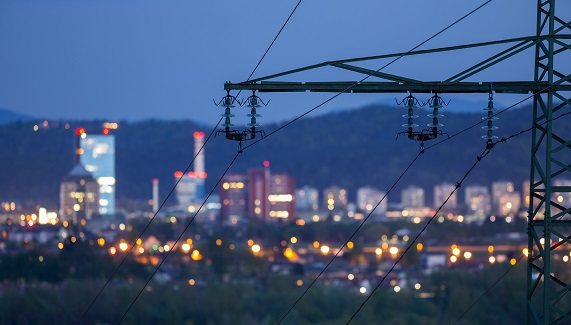Renewable energy is an indispensable energy resource in Texas and the greater U.S. It diversifies our state’s energy grid and ensures we always have a reliable, never-ending source of clean energy. In fact, renewables produce more than 21% of all utility-scale net electricity generated in Texas. Moreover, our state leads the nation in wind-powered electricity generation, producing more than a quarter of the total generated in the U.S. in 2018.
In spite of our state’s giant feat in wind generation and the fact that solar energy is the most abundant energy resource on Earth, less than 1% of the energy produced in Texas comes from solar. At any given moment, the sun bathes the Earth in 174,000 terawatts of solar energy. (Hence where the name 174 Power Global comes from- Chariot’s affiliate that constructs utility scale solar farms.) That’s equal to more than 10,000 times the total energy the world uses. Another fun fact? A lot of wind is actually a byproduct of the sun heating the Earth, which means wind energy is basically solar energy!
It’s clear our state has learned to harness the wind, but where does solar fit into that energy mix? It’s been only in the last several decades (since 1954 to be exact) that we’ve been able to extract electricity from the sun. And up until a few years ago, solar power was too expensive for most to justify its means.
We believe solar is just getting started and has so much potential. We’ve discussed the various ways we can capture and utilize the sun’s energy, including the photovoltaic technology (the “active ingredient” in solar panels) we develop at Chariot Energy! Now, we want to share how we use our photovoltaic technology to capture the sun’s energy and transform it into the electricity you use in your house every day.
How Do Solar Panels Work?
We all think we know how solar panels generally work: Sunlight hits a solar panel, something happens, and then poof! out comes electricity. But what exactly happens in those moments between when the sun hits the panel and when electricity is produced? The process begins at the molecular level when the sun hits a photovoltaic material, which is a fancy word for a solar panel. Here’s an easy-to-understand guide to how it all works.
The Science Behind Solar Panels: Photovoltaic Technology
Photons are the Basis of All Light
Light is made of little “packets” of electromagnetic radiation. These packets are called photons. The sun constantly emits photons traveling at the speed of light. 93 million miles later, these photons reach the Earth’s surface and shine upon a solar panel. Photons either pass through, bounce off of, or are absorbed into the panel, which leads us to our next step.
Solar Panels are Comprised of Photovoltaic Cells
Photovoltaic cells are the electricity powerhouses of solar panels. They are made of two wafer-thin sheets: One is positively charged, and one is negatively charged, and both are made from a semiconductor such as silicon (a crucial element that’s also in your computer and other devices).
Think of a solar cell like two sides of a battery: One end is positive, and one end is negative, and once you connect them, they produce an electrical current. A solar panel contains many of these battery-like cells to maximize electricity generation.
Photons Transfer Energy to Electrons in the Photovoltaic Material
Once photons are absorbed into the panel, they give up their energy to the electrons orbiting around the atoms of silicon. With this excess energy, the electrons are knocked loose from the silicon atoms. But electricity still hasn’t been generated yet! There’s one more step.
The Solar Cell Creates a Current using the Loose Electrons
Once freed from silicon’s grasp, the electrons then can travel along the semiconductor toward the highly conductive metal plates that line the solar cells. This creates an electrical current, and there you have it: Electricity!
How Solar Panels Generate the Electricity that Powers Your Home
Now that we’ve discussed how electricity is generated from the sun, let’s talk about how that power gets from our solar panels to your home.
Solar Panels Generate A Direct Current of Electricity
Once an electrical current is generated in a solar panel, it naturally flows in a straight direction. This is called direct current, or DC, and it’s used to power smaller electronics like your remote control or any other battery-powered device. However, your home and business are powered by a different type of electricity flow: Alternating Current, or AC. To use solar electricity, DC must be converted into AC and sent to your breaker! This is done through a device called a power inverter.
How Solar Power Is Delivered to Your Home
Once the electricity is converted to a usable, travelable medium (AC), it’s then transmitted across Texas on high voltage power lines. Once that power arrives at its destination (near the consumer), the electricity goes through several step-down transformers until it reaches an appropriate voltage for your home or business.
And there you have it. Solar electricity in a nutshell!
You Don’t Need Solar Panels to Benefit from Solar Energy
Although the process is a bit (a lot) more complicated than it seems, it’s actually quite simple to benefit from solar energy. As you can tell, you don’t need your own panels to get 100% green electricity. If you choose to buy a 100% solar plan powered by Chariot Energy’s solar farms, you’re supporting the renewable energy industry just the same. We’ve talked generally how solar panels work, but here’s how our process to deliver you 100% solar works.
Remember we mentioned there’s silicon in solar panels? Well, Chariot Energy and its affiliated companies own the entire solar panel supply chain, even the sand that’s used to make the polysilicon material for extracting energy from the sun. This is how we’re able to offer you competitively priced energy from our burgeoning solar farms. Not only is Chariot a solar energy wholesaler, but we’re also a retail electricity provider. This means the solar energy created can be purchased by you, the consumer.
Just how competitive are our solar rates? Head on over to our plans page to learn more about our no-panels-required solar electricity plans in your area!

